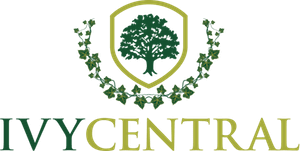Skidmore College, founded in 1903 by Lucy Skidmore Scribner as the Young Women’s Industrial Club of Saratoga, has evolved into a prestigious liberal arts institution with a rich history. Initially chartered as the Skidmore School of Arts in 1911, it became a four-year degree-granting college in 1922. Over the years, visionary leaders like Charles Henry Keyes, Henry T. Moore, and Joseph C. Palamountain Jr. played pivotal roles in its growth. Skidmore transitioned from a women’s college to a coeducational institution during Palamountain’s presidency, experiencing substantial growth and academic expansion.
Nestled in the heart of Saratoga Springs, Skidmore College enjoys the vibrant blend of historic charm and modern culture. Today, the city is a cultural hub, offering a rich tapestry of events related to classical music, dance, and theater. Its restored Victorian mansions attract students interested in art and architecture, while the Saratoga Spa State Park, with its springs and mineral waters, captivates biology enthusiasts.
Skidmore College’s picturesque campus spreads across 750 acres in Saratoga Springs and seamlessly blends modern architecture with nods to its Victorian heritage. Since 1964, over 50 buildings, including the innovative Center for Integrated Sciences, have been an important part of the campus. Covered walkways connect academic and social spaces throughout the campus, offering stunning views of mountains, woods, and fields. The college’s focus on sustainability is key, with buildings like Sussman Village utilizing geothermal systems. Recent additions, a solar panel array, and a hydropower dam contribute to 20% of the campus’s electricity. Ongoing initiatives aim to increase geothermal capacity to nearly 45%.
Student Cohort Size
Skidmore College has a total student population of 2,700 students. 59% of the students are women, and 41% are male, including 8% who are international students. The students at Skidmore College represent 44 states and 65 countries.
Four-Year Completion Rate
The graduation rate is among the most important factors when selecting a college. Skidmore College’s first-year retention rate is 93%. This means that 93% of first-year students continue their education for their sophomore year and beyond. The 4-year graduation rate is 84%. This implies that 84% of students were able to graduate after 4 years. The 6-year graduation rate is 87%. This implies that 87% of students were able to graduate after 6 years.
Read More: Whitman college
Student-to-Faculty Ratio
The student-to-faculty ratio is 8:1. The average class size at Skidmore comprises of 16 students. 94% of the classes at Skidmore College have fewer than 30 students.
Admissions
Acceptance Rate
Skidmore College received 12,144 applications, out of which 2,784 applicants were admitted, with an acceptance rate of 23%. 54% of the Class of 2027 was enrolled from the Early Decision applications.
Acceptance GPA
The admitted students have a median GPA between 3.50 and 3.74.
Types of Admission
Skidmore College’s applicants can apply through the Early Decision or Regular Decision programs. Early Decision is a binding admission plan for students who have determined that Skidmore College is their first choice and who feel they can present a strong application without senior grades being reviewed. Students admitted through the Early Decision admission plan are required to cancel their applications elsewhere and enroll in Skidmore College. Regular Decision is a non-binding and unrestrictive admission plan that allows students more time to complete the application and to have grades from the first term of their senior year considered in the review.
Application Components
All required parts of the Common Application or Coalition.
Official high school transcript: An official high school transcript will display courses and grades for all years of high school attended.
Two academic teacher letters of recommendation: Recommendations must be from core academic teachers who worked with the student in 10th, 11th, or 12th grade.
Standardized Test Scores: While test scores are optional for students applying for fall 2023 and fall 2024, the average SAT scores for admitted students were between 1320 and 1440, and the average ACT scores were between 30 and 33.
Academics
Skidmore College is known for its selective liberal arts education. The college offers a foundation in the arts, humanities, sciences, and social sciences. Students at Skidmore can delve into career-specific fields such as business, education, exercise science, and social work. The college boasts over 50 degree programs, allowing for flexibility in crafting individual academic paths. Skidmore offers 15-week fall and spring semesters, with additional study options in the summer, including two five-week academic sessions.
Skidmore College believes in the value of interdisciplinary study. The institution encourages students to explore their individual interests. Rather than favoring one discipline over another, the university promotes a “do both” mentality, urging students to integrate various modes of thinking and ideas from multiple fields. The intentionally broad, flexible, and supportive educational environment facilitates the combination of diverse interests. The students deepen their knowledge and skill set through a minor, pursuing a double major, or forging a unique academic path.
The internship program enhances this flexibility, providing students with hands-on learning experiences off-campus, spanning various sectors like science, government, industry, communications, and nonprofit organizations. Skidmore encourages students to test their skills through internships, often facilitated by supportive alumni. Service learning is a key component, with many courses incorporating hands-on activities benefiting the local community. Honors Forum members are engaged in service learning, and the Office of Off-Campus Study & Exchanges organizes diverse opportunities, both international and domestic.
Beyond the Skidmore campus, students may take advantage of courses offered at other Capital District colleges through the Hudson-Mohawk Association of Colleges and Universities, which includes such institutions as Rensselaer Polytechnic Institute, Union College, and the State University of New York at Albany. Cooperative programs include one in engineering with the Thayer School at Dartmouth College and one in nursing at New York University.
Read More: Kalamazoo College
Most Popular Majors
Business
Psychology
English
Political Science and Government
Economics
Anthropology
History
Biology
Environmental Science
Fine Arts
Cost of Attendance
Tuition and fees $65,030
Room fees (dorm double) $10,252
Meals $7,088
TOTAL ESTIMATED BILLED EXPENSES $82,370
Books and first-year supplies $1,300
Personal expenses $1,270
Transportation (est.) $300
TOTAL OTHER EXPENSES $2,870
Total Cost of Attendance $85,240
To conclude, the students of Skidmore College get the opportunity to broaden their perspectives and creatively establish connections between diverse ideas. These foundational skills align with the philosophy that Creative Thought Matters. The college emphasizes the importance of thinking beyond conventional boundaries as one of the most potent ways to bring about positive change in the world, contributing to the development of a happier, healthier, and more inclusive society.
Embark on a transformative higher education journey and elevate your path to academic success with the expert guidance and personalized support of an Ivy Central college counselor.






